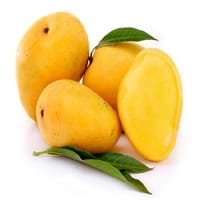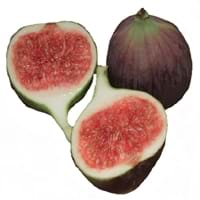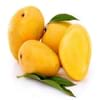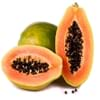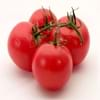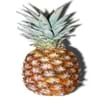Health Benefits
Cancer prevention, Cures fatigue, Heart care, Prevents strokes
Cancer prevention, Controls blood pressure, Heart care, Increase in haemoglobin, Prevents constipation, Prevents macular degeneration, Reduces nervous tension
General Benefits
Anti oxidant properties, Boosts immune system, Controls blood pressure, Digestive aid, Improves eye vision, Maintains healthy cholesterol level
Controls blood pressure, Helps in weight loss, Maintains healthy cholesterol level, Strengthens bones
Skin Benefits
Anti-aging benefits, Brightens and lightens complexion, Skin cleansing, Skin rejuvenation, Treatment of acne, Treatment of blackheads, Treatment of dark spots
Brightens and lightens complexion, Hydrates skin, Skin rejuvenation, Treatment of acne
Hair Benefits
Good conditioner, Prevents hair loss, Treatment of dandruff
Good conditioner, Regulates hair growth, Softening mask
Allergy Symptoms
Abdominal pains, Breathing difficulty, Diarrhea, Runny nose, Sneezing, Swelling of mouth, tongue or lips, Watery eyes
Abdominal pains, Anaphylaxis, Coughing, Headaches, Hives, Itching, Nasal congestion, Skin rash, Sneezing, Sore throat, Swelling of hands
Side Effects
Increase in blood sugar level, Diarrhoea, Weight gain
Allergic reaction, Skin rash, Possibly unsafe during pregnancy
Best Time to Eat
Don't consume at night and before bed, Eat the fresh ones, avoid mixing with any other foods, don't eat after meal., Morning time (before lunch)
Best if taken as a breakfast (or empty stomach), Don't consume at night and before bed, Morning time (before lunch)
Vitamin B5 (Pantothenic Acid)
Vitamin C (Ascorbic Acid)
Vitamin K (Phyllochinone)
Phytosterol
Not Available
Calories in Fresh Fruit with Peel
Not Available
Calories in Fresh Fruit without Peel
Not Available
Type
Tree fruit
Tree fruit
Season
Spring, Summer
Summer, Winter
Varieties
Alphonso, Valencia Pride, Badami, Chaunsa, Nam Dok Mai, Glenn, Sindhri, Madame Francique, Kesar and Keitt
Abyad, Adriatic, Alma, Atreano, Bataglia, Black Bethlehem, Black Madeira, Black Mission, Brown Turkey, Sierra, Calimyrna, Kadota, Deanna, Figoin and Hardy Chicago Fig
Color
Orange, Red, Yellow
Green, Purple, Red
Origin
Southern Asia
Western Asia
Soil Type
Clay, Loam, Sand
Clay, Limestone, Loam, Sandy
Climatic Conditions
Humid, Warm to hot climate
Dry, Warm
Facts about
- A mango tree can bear fruits even after the age of 300 years.
- Height of a mango tree can be as high as 100 feet.
- In India, mango is known as a symbol of love. Also, a mango basket is considered as the sign of friendship.
- Fig tree is considered as a symbol of abundance, fertility and sweetness.
- The fig is made up of 55% of natural sugar so they are the sweetest fruits.
- Figs are used as a fat substitute in recipes.
Top Producer
India
Turkey
Other Countries
Bangladesh, Brazil, China, Indonesia, Mexico, Nigeria, Pakistan, Philippines, Thailand
Albania, Algeria, Brazil, Egypt, Iran, Morocco, Syria, Tunisia, United States of America
Top Importer
United States of America
France
Top Exporter
Mexico
Turkey
Botanical Name
Mangifera Indica
Ficus carica
Synonym
Not Available
Not Available
Subkingdom
Tracheobionta
Tracheobionta
Division
Magnoliophyta
Magnoliophyta
Class
Magnoliopsida
Magnoliopsida
Subclass
Rosidae
Alismidae
Family
Anacardiaceae
Moraceae
Species
M. indica
Ficus carica
Generic Group
Cashew
Mulberry
Difference Between Mango and Fig
We might think that Mango and Fig are similar with respect to nutritional value and health benefits. But the nutrient content of both fruits is different. Mango and Fig Facts such as their taste, shape, color, and size are also distinct. The difference between Mango and Fig is explained here.
The amount of calories in 100 gm of fresh Mango and Fig with peel is Not Available and 74.00 kcal and the amount of calories without peel is 60.00 kcal and Not Available respectively. Thus, Mango and Fig belong to Low Calorie Fruits and Low Calorie Fruits category.These fruits might or might not differ with respect to their scientific classification. The order of Mango and Fig is Sapindales and Rosales respectively. Mango belongs to Anacardiaceae family and Fig belongs to Moraceae family. Mango belongs to Mangifera genus of M. indica species and Fig belongs to Ficus genus of Ficus carica species. Beings plants, both fruits belong to Plantae Kingdom.
